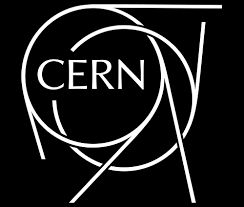
The Science and Technology Facilities Council (STFC) is multidisciplinary research organisation that carries out research in science and engineering, and funds UK research in areas including particle physics, nuclear physics, space science and astronomy. Every year, STFC offers both year-long placements and summer internships across their research facilities that include lasers (including free electron lasers), light sources (including synchrotron light sources), accelerators, neutron and muon sources, facilities for atmospheric and space science, high-performance computing facilities, a deep underground science facility and various specialised laboratory spaces and equipment.

Diamond Light Source is the UK’s national synchrotron. Diamond provides national science infrastructure sustained by about 700 staff and used by 14,000 researchers from life and physical sciences.
Researchers from both academia and industry conduct experiments harnessing the power of electrons to produce bright light to study anything from fossils to jet engines and viruses. The Diamond facilities are the national Synchrotron, Cryo electron microscopy and the ISIS neutron and muon source at the Harwell Science and Innovation Campus (Oxfordshire).
Diamond offers both summer internships and year in industry programmes. The scheme allows undergraduate students studying for a relevant degree to gain experience working in a number of different teams at Diamond Light Source.

CERN (Organisation européenne pour la recherche nucléaire) is the European Organization for Nuclear Research which operates the world’s largest and most complex scientific instruments to study the fundamental particles. Using particle accelerators and detectors, the scientists are seeking answers to the most fundamental questions such as: What is the nature of our universe? What is it made of?
VIDEO – could you be next to work at CERN? Take Part
WEBINAR – Learn about the student and graduate opportunities on offer at CERN
If you’re an undergraduate in applied physics, engineering or computing and are looking for a practical training period or a place to complete your final project, you could spend 4 to 12 months at CERN during the course of your studies (Bachelor or Master) via different types of programmes. Students that want to continue with PhD studies or recent Master/Bachelor graduates will also find a relevant programme at CERN. Please see below.
Here are a few tips (from CERN) for applying:


The Meteorological (Met) Office is the national meteorological service for the UK that provides weather services and climate science. The Met Office collects and analyses large amounts of data using science and cutting-edge technology in collaboration with partner organisations around the world. The Met Office offers both industrial placements and summer internships for students.


The Defence Science and Technology Laboratory (Dstl) is an executive agency of the Ministry of Defence of the United Kingdom whose purpose is to harness advanced science and technology for the defence and security of the UK. Dstl provides the UK government with specialist science and technology research, advice and analysis. Dstl offers both year-long placements and internships.

The Atomic Weapons Establishment (AWE) is a research facility of the UK’s Ministry of Defence that supports the government’s nuclear defence strategy. AWE uses nuclear know-how and technical expertise to design, manufacture and support the UK’s nuclear weapons for counter-terrorism and nuclear threat reduction activities. AWE offers a year long placements programme which is termed “undergraduate scheme”, see below.

The Space Placements in Industry (SPIN) is the scheme managed by the UK Space Agency and supported by the Satellite Applications Catapult. It offers short term placement opportunities (minimum of 8 weeks over the summer) in the UK space firms for students considering employment in the space sector. The programme’s aim is to connect space sector organisations with talented and enthusiastic students to ensure the future success of the businesses in the sector.


The Cavendish Laboratory and the Institute of Astronomy take turns hosting a summer student supported by Mr David and Mrs Bridget Jacob Internship Programme. The programme provides funding for one students to undertake a 4 to 10 week summer research project.
The student should be from a non-Oxford or Cambridge higher-education institution within the UK, and should be between their penultimate and final year of undergraduate study. The Cavendish Laboratory encourages applications from all sections of society, in particular from under-represented groups and applicants who have not yet had the opportunity to demonstrate their full potential because of particular social or personal circumstances.

The Max Planck Institute for the Physics of Complex Systems (MPIPKS, Max-Planck-Institut für Physik komplexer Systeme) is a research institute in Dresden, Germany, one of the 80 institutes in the Max Planck Society. The research at the institute ranges from classical to quantum physics and focuses on condensed matter, finite systems and biological systems. A number of additional independent research groups incorporate research on a broad range of related topics.

ISIS Neutron and Muon Source is a research centre at the Rutherford Appleton Laboratory operated by the STFC and based on the Harwell Science and Innovation Campus in Oxfordshire. It supports national and international community of about 3,000 scientists who use the techniques of muon spectroscopy and neutron scattering to study properties of materials on the atomic scale for research in physics, chemistry, materials science, engineering, biology, earth science and archaeology. The name ISIS is not an abbreviation. It was named ISIS in October 1985 at its official inauguration by the UK’s Prime Minister Margaret Thatcher after the Egyptian goddess Isis who could restore life to the dead.

The Culham Centre for Fusion Energy (CCFE) is the UK’s national laboratory for fusion research based at Culham Science Centre near Oxford. CCFE works with research partners and industry world-wide to enable sustainable energy by creating electricity from heat generated from nuclear fusion reactions. Fusion is the process that drives the Sun. Brining fusion to the electricity grid is a one of the toughest scientific challenges, but one of the most exciting way of enabling sustainable energy society needs.